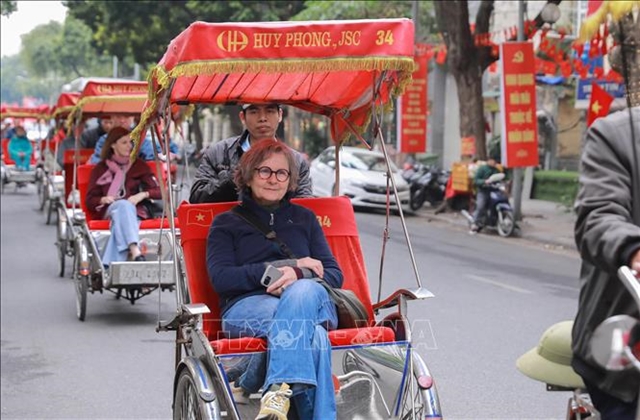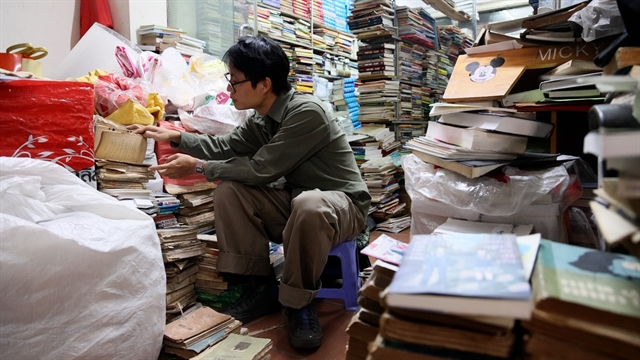
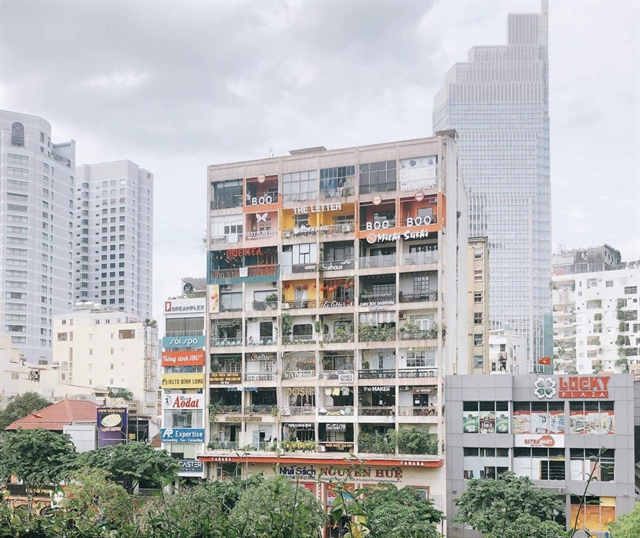
|
| An old building on Nguyễn Huệ pedestrians-only street in HCM City. The building has in recent years become famous with many young people coming here after its apartments became shops. VNS Photo Thu Ngan |
HCM CITY — Going to old buildings to shop and have coffee and food has become popular with young people in major cities looking to find somewhere chic and attractive to relax.
A visit to an old apartment building means they can enjoy a whole day shopping, chatting at a beverage shop or getting their nails done.
Thu Trang, a young girl, says she loves going to such buildings.
“In one building I can enjoy everything. Furthermore, coming here will help me explore the typical old HCM City.”
In HCM City and Hà Nội many old apartment and office buildings are becoming more attractive than ever because they are used as shops.
More and more small businesses are flocking to these places to open shops. In addition to low costs, these places also help them be unique to attract young customers.
The focus on such old buildings is not new.
Long-standing apartment buildings and mansions on main streets like Tôn Thất Thiệp and Nguyễn Huệ in HCM City have been enjoying steady traffic for many years thanks to charming coffee stores, cool bars and hip clothing brands.
Hà Nội, on the other hand, has always been famous for its old quarter, where the past and present meet to bring about great business.
What used to be shops of artisans and traders is now home to concept stores, hostels and restaurants, bustling with tourists and youngsters.
New trend, new opportunity
In its latest report, Jones Lang Lasalle (JLL) Vietnam said that in an increasingly tight real estate market more and more investors are finding value in adapting old buildings.
The pace of technological and social change around the world means more and more buildings are becoming obsolescent as consumer needs and demand shift, and in between the glossy new developments and protected historic buildings are many older, redundant buildings, it explained.
“Thoughtful reuse of these moribund assets offers a way for investors to enter the market and add value,” JLL head of Asia Pacific research, Dr Megan Walters, said.
“Obsolescent buildings might be wrong for their current use, but might also be adaptable to something more suitable.”
Thanks to its past, Việt Nam’s large cities are filled with historic buildings and tiny alleyways that lead to more tiny alleyways, it said.
While the older generations used to line up for an opportunity to secure street-front real estate for retail purposes, young people are more into low-key properties, it said.
Both Hà Nội and HCM City are seeing a resurgence of historic buildings that would have been replaced by more modern properties by now, if not for the millennials, it said.
Non-retail businesses are not staying out of the retro wave, it said, pointing out Toong is known for transforming many old, underutilised buildings into contemporary co-working spaces, bringing modernity and tradition into the workplace.
Forgotten properties around the city are now busy again thanks to the presence of start-up companies with a young and hip workforce, though it is not as if any old building could be resurrected successfully, it said.
Walters says: “The most suitable buildings for adaptive reuse are those which are well-positioned, even if the site is not suited to the current use.
“Finding assets with ‘good bones’ and a layout which can be easily adapted to new use is also important.
“City authorities are likely to be amenable to plans which bring life, people and employment back to a building or a district.”
Safety should also be a major consideration for businesses considering this type of property, it said.
Many historic properties are in various stages of disrepair and suffer from pests, mould and damp walls, and the absence of building management boards and safety regulations put these properties at great risk, it warned.
Caution should be taken before investing, it said.
Regardless, the trend is here to stay, for both retail and non-retail businesses, and investors prepared to think creatively could acquire such buildings while the price is still reasonable, it added. — VNS


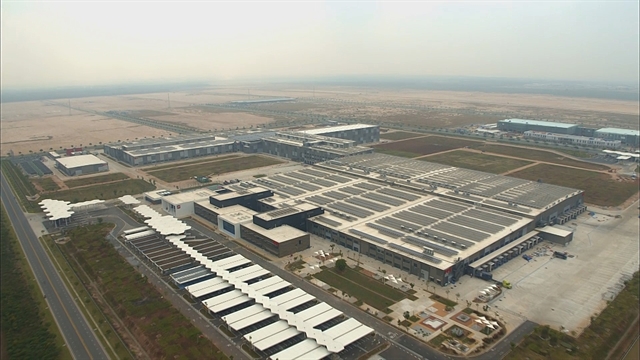

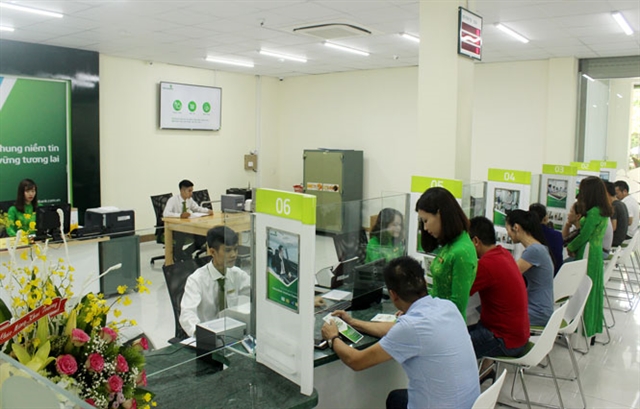







.jpg)

